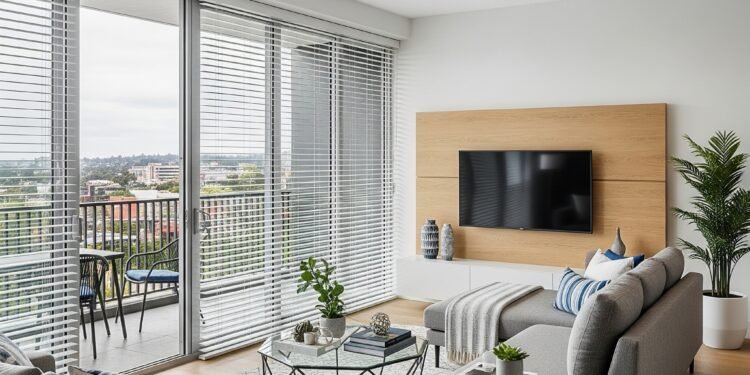Introduction
Sliding glass door treatments can make your home’s most difficult windows become beautiful statement pieces that enhance your ability to manage light, privacy, and style. Whether your home has a patio door that opens to the backyard or glass panels from floor to ceiling in the living room, window coverings are essential!
Regular window treatments simply don’t cut it for these big panes of glass. Decorating these areas presents its own set of challenges. Just scroll through these seven highly rated sliding glass door treatment options both practical and pretty to find out how to make the indoors as comfortable as the great outdoors and get the best of both worlds.
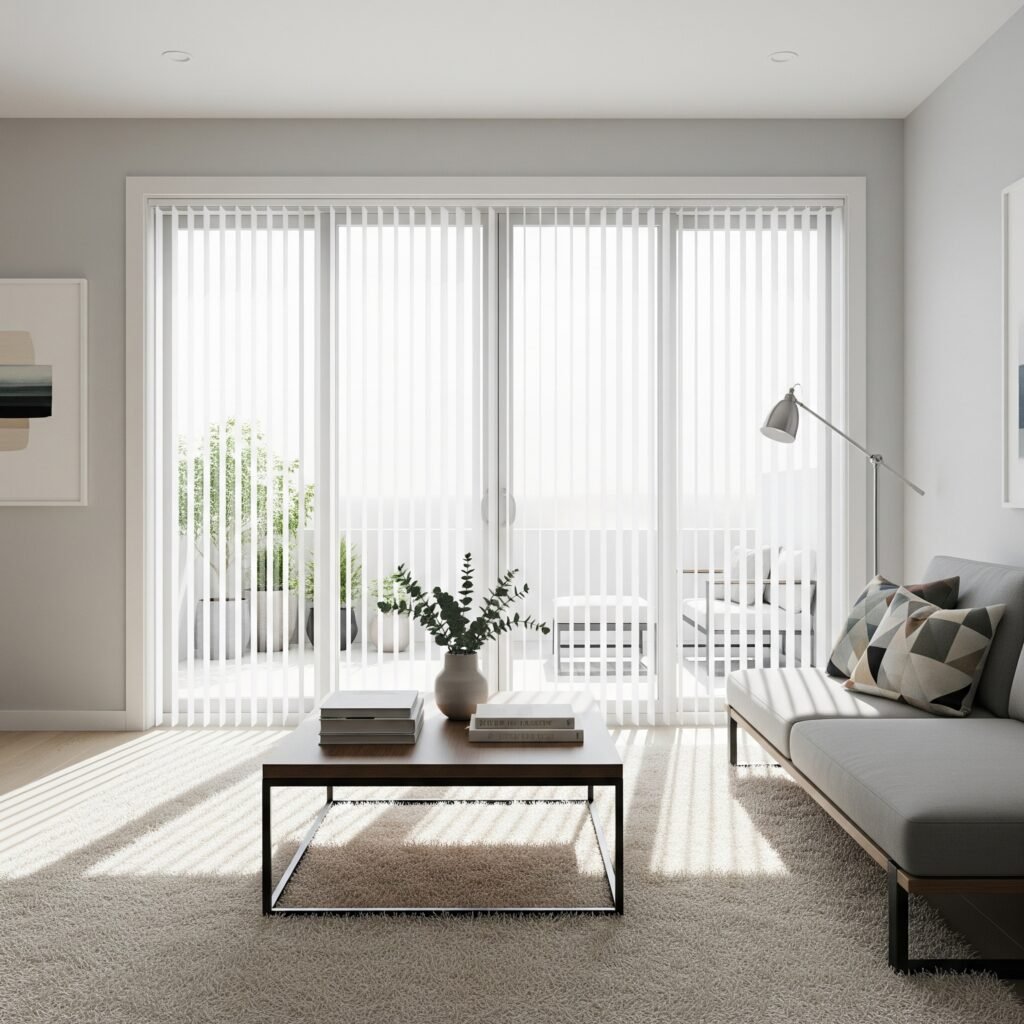
- 1. Vertical Blinds — The Original Treatment Used for Sliding Glass Doors
- 2. Panel Track Systems for contemporary homes
- 3. Cellular Shades for Energy Efficiency
- 4. Draperies and Curtains for Elegance
- 5. Sliding Shutter Panels for Durability
- 6. Filters of Light: Sheer Vertical Treatments
- 7. Multi-Layer Solutions for Maximum Control
- FAQ
1. Vertical Blinds — The Original Treatment Used for Sliding Glass Doors
Vertical blinds are the ultimate in practicality for sliding glass door treatments. These classic window coverings continue to be the most sought-after option for a number of reasons: they function in the same direction as your sliding door, making them extraordinarily easy to use.
Vertical blinds are made up of separate curtains that hang from a track system and can rotate to adjust light or slide completely open to give you access to and from your windows. Today, materials for modern options include vinyl and aluminum, as well as fabric and faux wood, meaning that there are choices for every taste and budget.
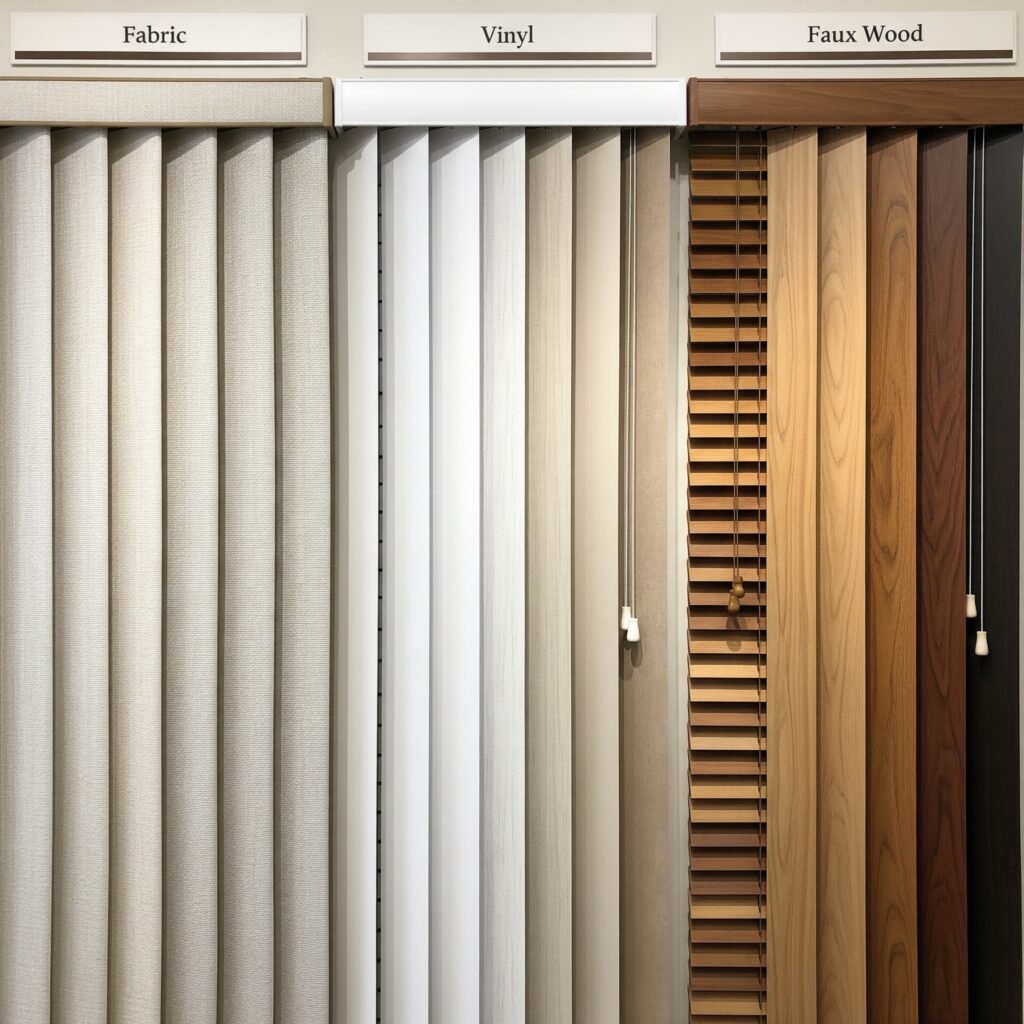
Some of the main benefits of having vertical blinds include durability, easy maintenance and they are child safe as well. Because of their unique track system, vertical blinds won’t easily be damaged by pets or kids like horizontal blinds would. They are also extremely affordable, with good, standard-sized options priced at less than $100.
Tip Box: Select wider 3.5-inch vertical blind slats for a more modern appearance; you can go with wider but 1-inch vertical slats should be adequate for easier maintenance and cleaning.
Vinyl vertical blinds are the best choice for busy families because of their durability and simple maintenance. You just have to go over them with a damp cloth to remove dust and dirt. While the fabric choices have a more gentle style, they also need a bit more care to keep them looking good.
2. Panel Track Systems for contemporary homes
Highly stylish panel track systems take modern sliding glass door treatments to a new level. Designed with oversized fabric panels that travel horizontally on tracks, these chic window coverings eliminate visual clutter and provide an ideal solution for homes with a contemporary architectural style.
Panel track blind’s function similar to room dividers and consist of wide panels of fabric sections that stack to one side when opened. This design gives you the maximum view while the panels are drawn back, and complete privacy when closed. Their straight lines and simple look make them perfect for both contemporary and transitional styled homes.
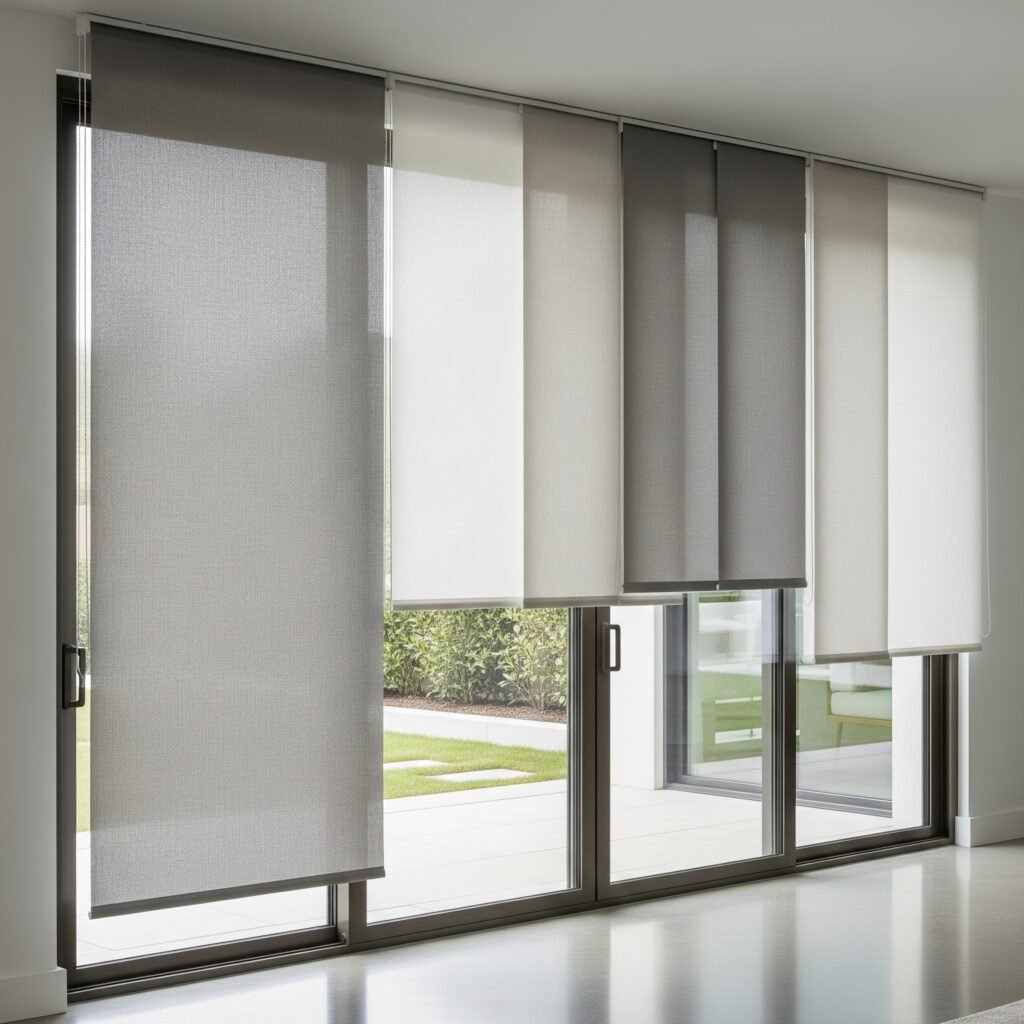
Panel track systems, being versatile in nature, are perhaps their best feature. They are found in hundreds of fabric choices, from sheer to blackout fabrics, so can solve most light control problems. From preventing harmful UV rays while preserving views to total blackout but allowing no fluids inside, solar screen fabrics has them all.
There are some downsides to using a panel track system. The panels can’t be tilted like vertical blinds for more subtle light filtering, so these are all-or-nothing affairs. Also, when open, they stack over each other and some of the width of your glass door will be occupied too, so you will have a limited maximum view.
3. Cellular Shades for Energy Efficiency
Cellular shades are another great choice for sliding glass door treatments, particularly for energy-conscious homeowners, as these shades have an extremely high insulation value. Also referred to as honeycomb shade, this new style of window treatment has a cellular design, similar to and filled with air, which provides another layer of insulation from the winter.
Vertical Cellular Shades just for sliding door track and movable rail and lock handle. This design completely overlays the sashes when they are closed, which makes great for privacy, blocking light, and temperature control. Your door can be 40% better at saving energy with the help of its honeycomb structure.
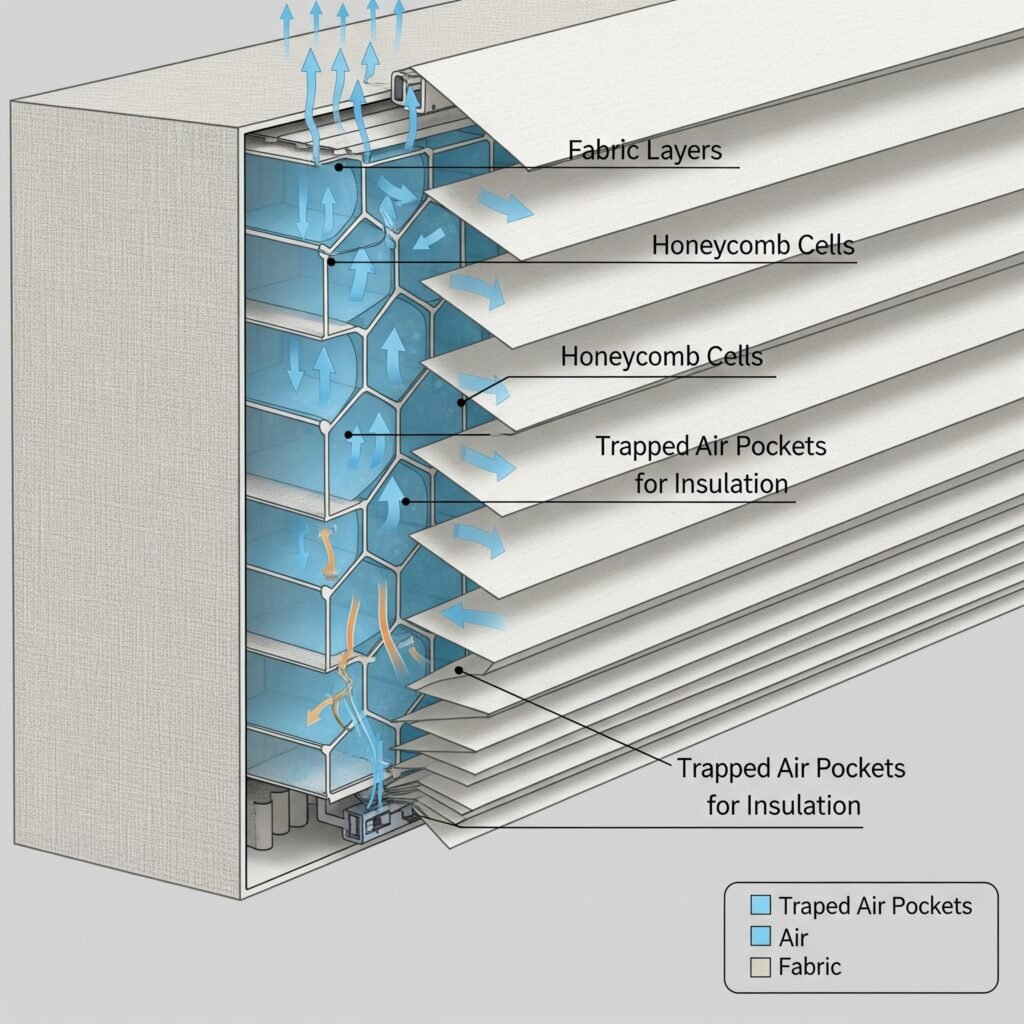
These shades have one, two, or three cells with larger cells having higher insulating value. They have light-filtering options that create a soft, diffused glow while blocking the view from outside (and vice versa), as well as blackout versions that block nearly all light from entering the space/window, great for bedrooms or media rooms.
Warning Box: Cell shades come at a higher price than your standard vertical blinds, but the energy savings won′t exactly hurt so you will likely come out on top economically indoors.
Cellular shades are primarily disadvantageous due to how they function. With that said, the expanding and collapsing action is often slower than simply sliding vertical blinds, and will make operating the coverings more tedious if done frequently. But for doors that get less traffic, this energy-saving compromise is usually worth it.
4. Draperies and Curtains for Elegance
Draperies are a classic solution for sliding glass doors that offers a sophisticated look. Full length curtaining can soften a space, add texture and warmth in appearance and feel, and even offer options for light control and privacy.
The foundation for great drapery hanging on sliding doors is one part planning and one part hardware. If you have a doorway and want to hang fabric panels, be sure to extend your curtain rod well past the door frame on each side to allow the panels to stack all the way off the glass when drawn back. Maximizing the amount of natural light during the day allows leaving the door on the other side without worrying about how the door will be operated.
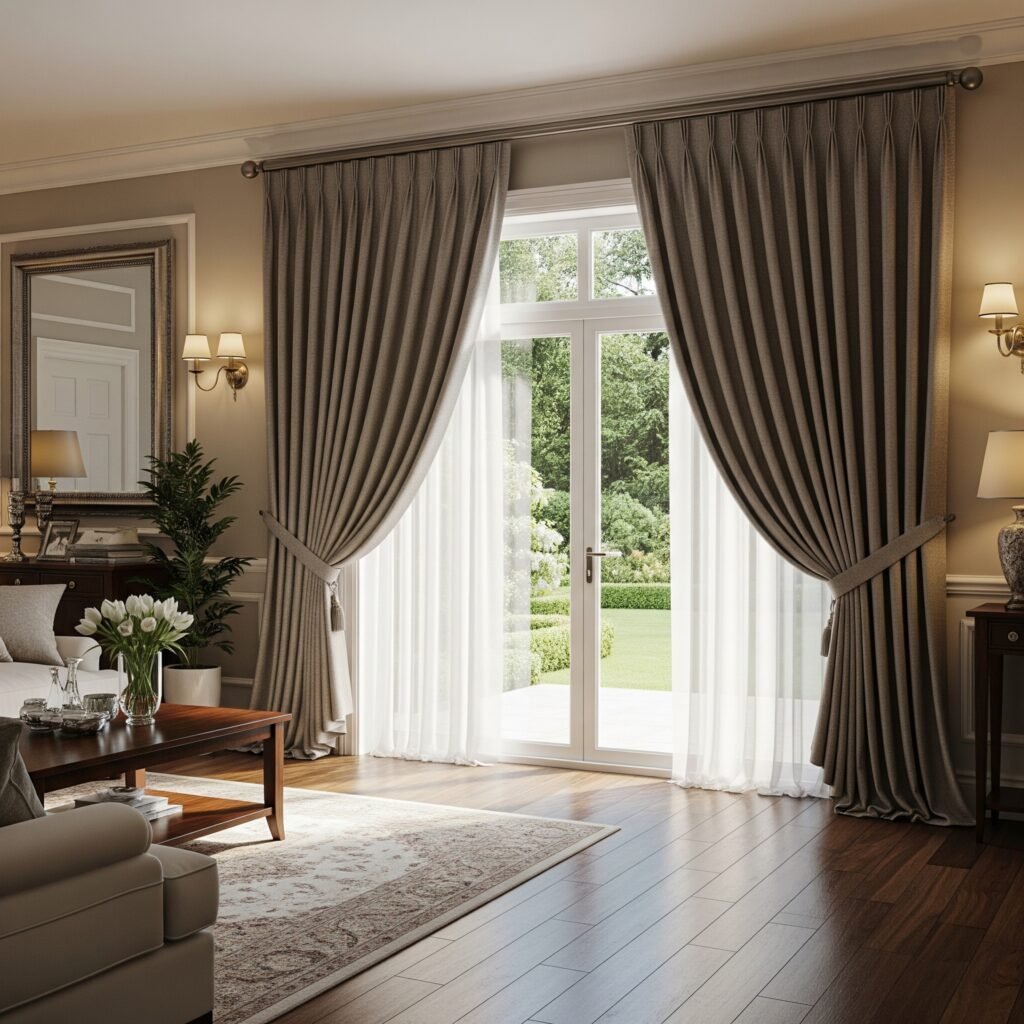
The most flexible option for sliding glass door treatments is layered drapery systems. Day Blinds: Use seamless panels for intruders to the outside during the day with heavier blackout curtains to block light when sleep is needed. That way you can customize your window covering to respond to your window needs in the moment.
The choice of fabric has a huge effect on appearance and performance. While lighter fabrics are a great way to keep that airy, casual feel, they offer less privacy and light control. While thicker fabrics provide superior insulation and the ability to block out a lot of light, these can make a smaller room feel overwhelmed. Choose your fabrics according to the scale and function of the room
Quote Box: “Draperies are suitable for any style of interior design, traditional through ultra-modern, because of the wide array of custom options.” – Interior Design Association
5. Sliding Shutter Panels for Durability
Sliding Shutter PanelsThis is the most durable of the sliding glass door treatments. These heavy-duty window treatments have louvers mounted in freestanding frames that glide on tracks — they offer a middle ground utility between traditional shutters (for light control) and sliding functionality.
Sliding panels, as the name suggests, slide to the side to open your glass doors, unlike hinged shutters that swing open. Ideal for high-traffic areas where durability and ease of use are required, that design works seamlessly. Its adjustable louvers pitch to your desired angle, so you can direct light wherever you need it most.
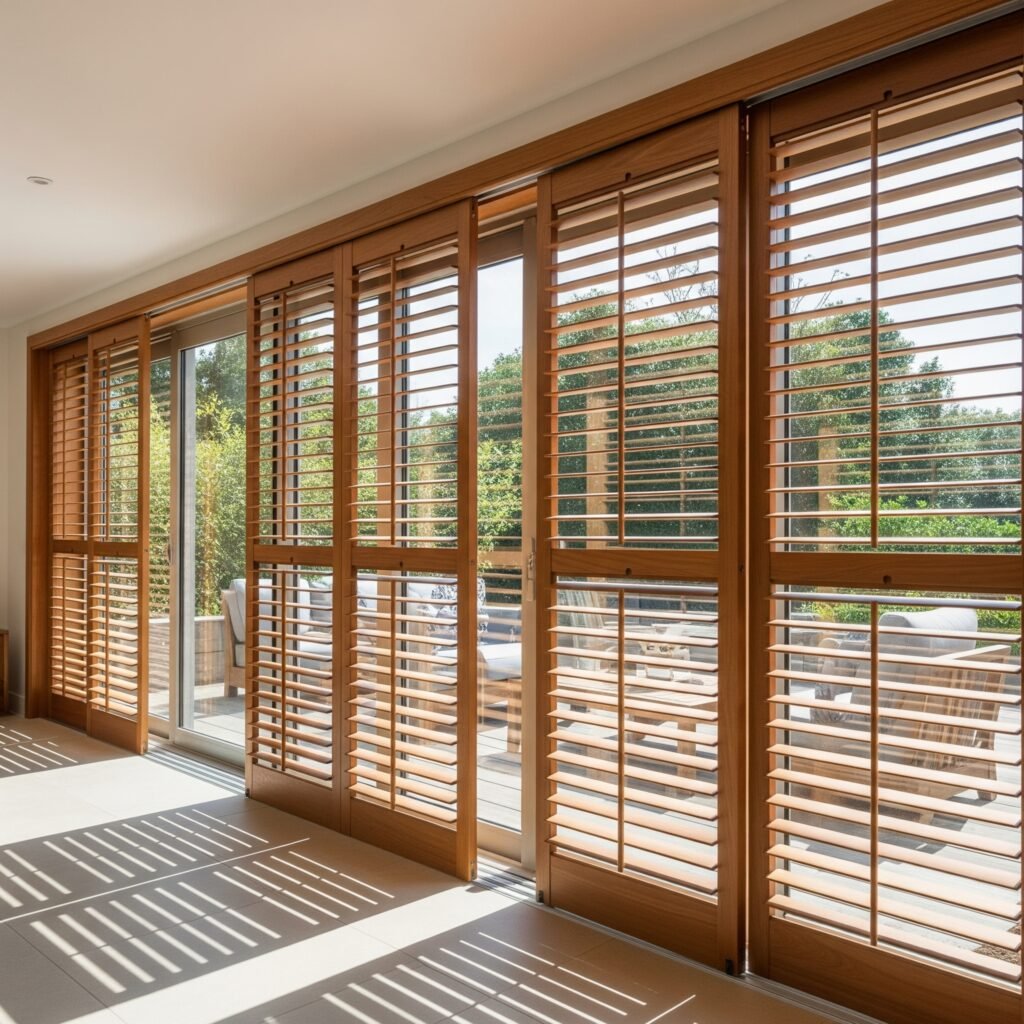
Shutter panels are ideal in extreme conditions, where other sliding glass door treatments may warp in no time. Poly satin and other synthetic materials will not warp, crack, or fade due to humidity or temperature changes. Plus, they’re fully waterproof, so they’re great for pool environments or humid regions.
Quality shutter panels are an investment that offers dividends in durability and house value. Quality shutters are an excellent investment, because they are permanent features, not fabric treatments, and can raise the resale value of your home while lasting for decades.
6. Filters of Light: Sheer Vertical Treatments
For sliding glass door treatments, sheer vertical window treatments hit that sweet spot between privacy and light. These unique coverings blend the functionality of traditional vertical blinds with sheer fabrics for soft, diffused light.
You can find this in Luminate Privacy Sheers—and similar products, which include sheer fabric panels with vanes you can rotate to 180 degrees of light control. The sheer material filters natural light when the vanes are open. The overlapping vanes provide complete privacy when closed but still enables partial light transmission.
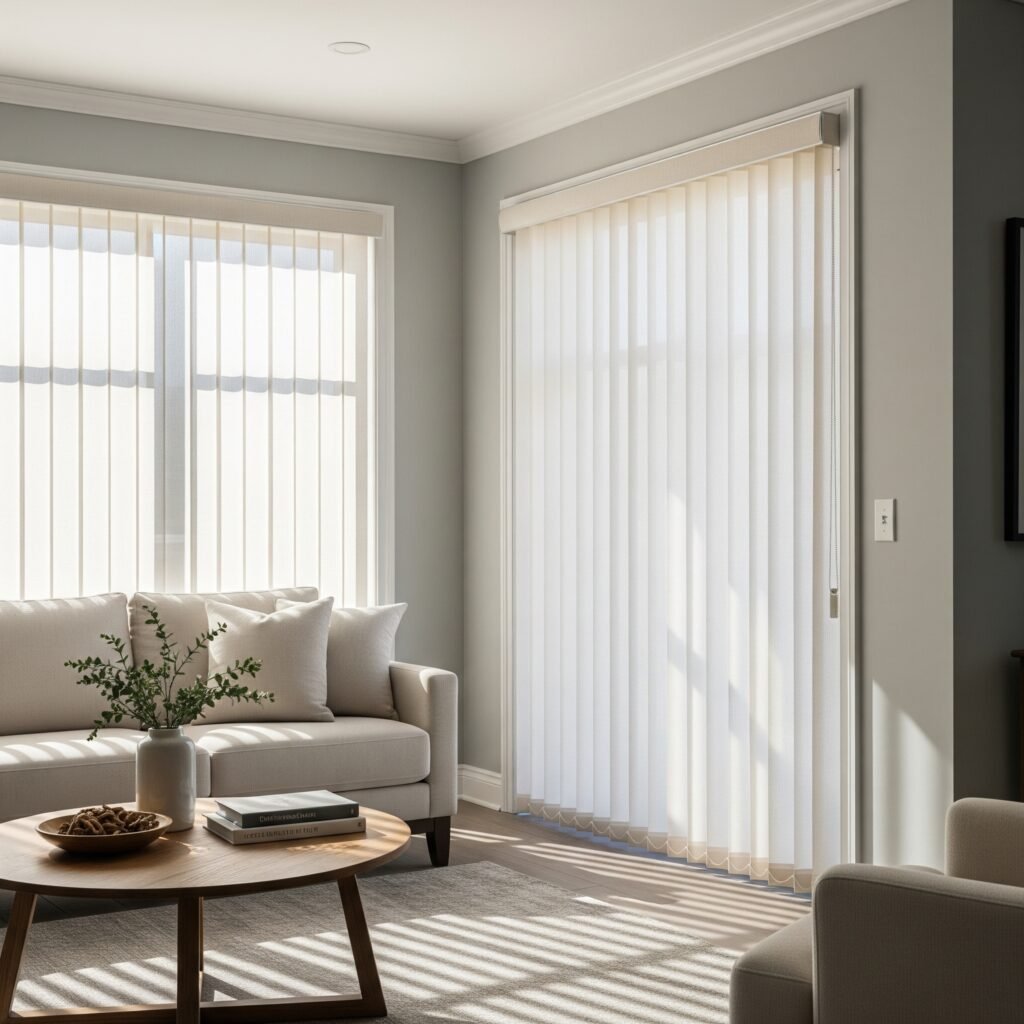
These treatments are highly effective in spaces that require direct glare reduction without significant obstruction of daylight penetration. The UV protection that is ingrained into quality sheer fabrics helps shield furniture and flooring by standing up to sun damage while also allowing you to still feel like you are outside.
One of the chief drawbacks of sheer vertical treatments is the lack of privacy fronts, as they are not opaque. The rotating vanes do give some privacy when closed, but they aren’t completely opaque like blackout treatments. They’re ideal for bedrooms where total darkness is not needed.
7. Multi-Layer Solutions for Maximum Control
For ultimate versatility, the most flexible approach to sliding glass door treatments is to mix and match several different types of window coverings. With layered systems, you can control these factors from one moment to the next, or from one season to the next.
Common examples of multi-layered combos include, but are certainly not limited to, sheer panels + blackout curtains, cellular shades + decorative valances, or vertical blinds + side panel drapery. Layers are important: Each brings its own function but, in the end, contribute to the overall aesthetics.
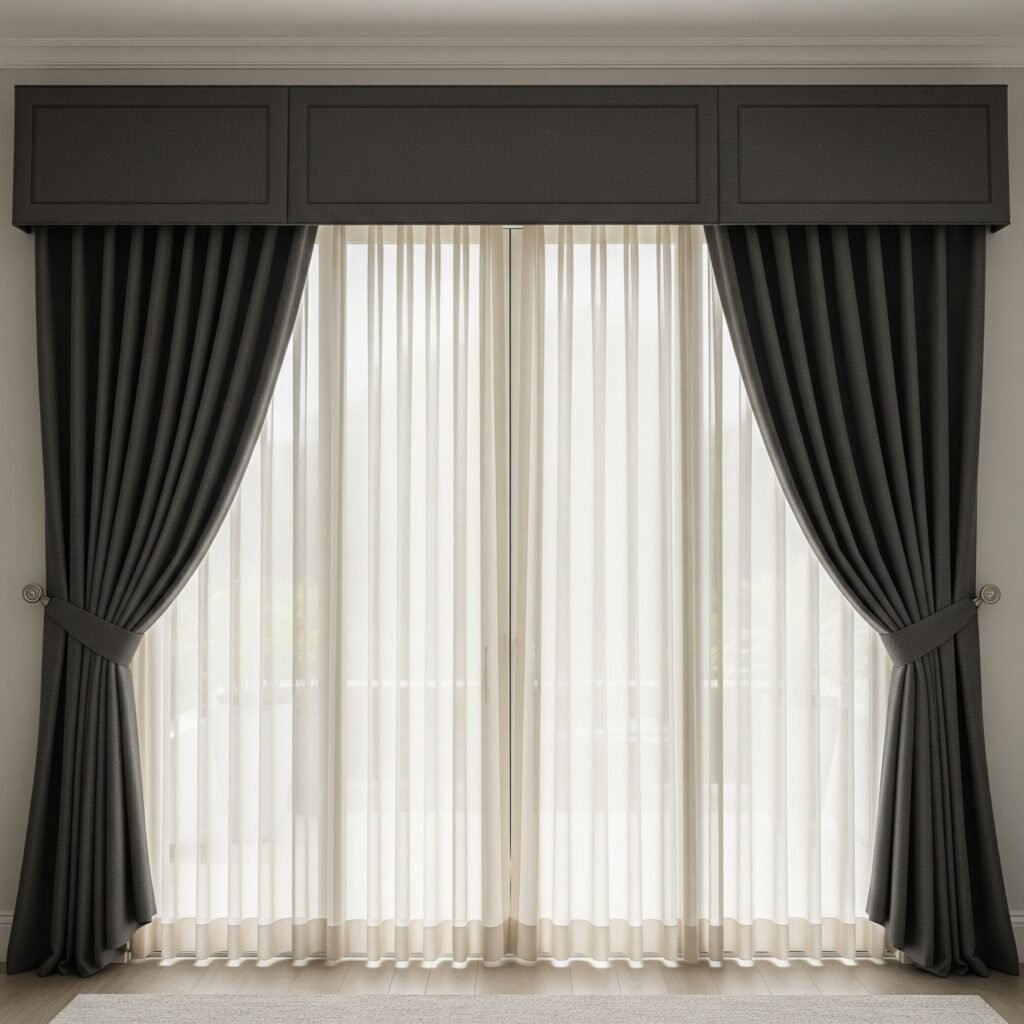
The secret to making layers work is to choose compatible operating systems that do not disrupt each other. For example, when mounting both curtain tracks and insulating cellular shades, the two layers can function independently without mechanical interference, such as the case with ceiling-mounted versus wall-mounted options.
Multi-layer system is more expensive but provide ultimate flexibility to changing requirements throughout the day. April 16, 2021 — Morning sheer filtering becomes afternoon privacy, when needed, and with a simple adjustment blackout condition for evening sleep.
Warning Box: a very common mistake, which will give a made-up look to your design and render it hard to operate with. The best usage is two complementary layers, which provides the best complement of the function with not visual cluttered.
FAQ
What are the cheapest sliding glass door treatments?
Vinyl vertical blinds are generally the least expensive sliding glass door treatments, priced starting below $100 for standard sizes. They provide durability and ease of maintenance, and they are cost-effective.
What window treatments are most energy efficient for sliding glass doors?
If you want the most insulative sliding glass door treatment, you want cellular (honeycomb) shades, which can improve energy efficiency by up to 40% by trapping air between the panes of their fabric design.
How do I measure sliding glass doors for window coverings?
Measure the width and height of your door opening, adding a few inches of width on either side (usually 6–12 inches) to ensure it covers the opening while treatments are closed. For costly treatments, professional measurement is advisable.
Can I do my own sliding glass door treatments?
Several treatments for sliding glass doors, including verticals and basic curtain systems, are DIY-able. Though elaborate systems such as motorized panels or custom shutters usually necessitate professional installation.
What’s the best way to clean different types of sliding glass door treatments?
Vinyl vertical slats can be wiped with a damp rag, fabric treatments often require professional cleaning, and cellular shades almost always require gentle vacuuming with a brush attachment. Check the cleaning recommendations by the manufacturer first.
